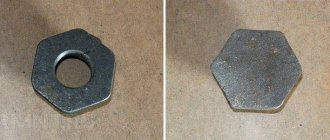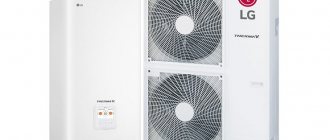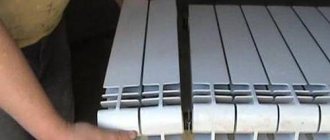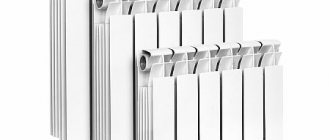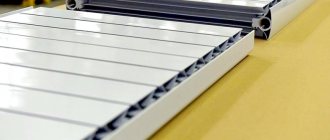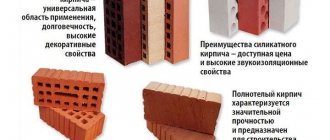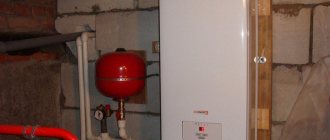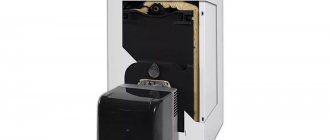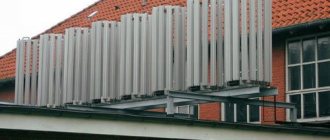In apartments and private houses, designers often use zoning. The living room and kitchen combine well. Two rooms connected to each other look spacious, and this layout will make the space cozy.
You can update the design, implement interesting ideas, or repeat a design seen in a magazine, TV show, or photo on the Internet. The style in the living room-kitchen can be different, and choosing it can turn into a fun experience.
Before combining rooms, designers advise taking into account the basic rules, creating a project, and choosing colors.
Zoning
Designers do not advise giving in to fashion trends and copying design ideas without taking into account dimensions, location and other nuances. Before planning and arranging furniture, every detail is thought through.
There are several simple rules that experts advise you to follow:
- Let the room have natural light. To do this, remove excess walls (except for load-bearing ones).
- If the rooms in the apartment are small (12 sq. m or 16 sq. m), the layout of the kitchen combined with the dining room will be the right solution.
- If the ventilation system is not designed correctly, the smell of food will spread throughout the apartment.
Rating of bimetallic heaters
Below we will help you figure out which batteries are best to choose for your home or apartment. Let's consider the operating conditions, workmanship and some nuances.
Global Style Plus 500
Suitable for central heating systems. Well adapted to high pressure and strong acidity of the coolant. The sections are connected by pipes with a silicone gasket that protects against leaks. The steel contour is crimped under high pressure, which allows it to withstand strong water pressure. Another advantage of this model is the high quality of painting.
Bimetallic heater Global Style Plus 500 Source m.onlinetrade.ru
But the downside will be the rather high cost. On average on the market it is 9,500 rubles. However, it is believed that the model is worth the money.
See also: Catalog of companies that specialize in the development of circuit diagrams and installation of engineering communications of any complexity
Rifar Monolit 500
A monolithic heater made in Russia, quickly gaining popularity. Made in the form of a single steel block, which eliminates the possibility of leaks. The radiator does not require a constant coolant temperature. Withstands pressure on the internal circuit up to 100 atmospheres. Rifar Monolit 500 provides high heat output with minimal energy loss.
Rifar Monolit 500 - a good heater from a domestic manufacturer Source klimatstandart.com
But there is one caveat: the dimensions of the Rifar Monolit 500 heating radiator are fixed, like any monolithic device. Therefore, if it turns out that there is not enough of it or, on the contrary, there is too much, simply adding or subtracting sections will not work.
Partitions
The interior of the kitchen and living room begins to be thought out from the junction of the two zones.
- Here are some of the ways and objects that delimit space:
- installation of a bar counter;
- kitchen island;
- big table;
- installation of a low partition.
Designers advise installing a wide counter, since you can sit at it like at a regular table, and high chairs are quite suitable for the whole family. However, in small rooms (16 sq m), narrow counters are installed. Kitchen islands are convenient to use, but are only suitable for large kitchen-dining rooms (25 sq m or 30 sq m). Capital low partitions are installed only if it has been decided in advance what they will be used for (for example, as a TV stand).
Comparison table of characteristics
In order to more clearly compare the models presented above, we use a comparative table of characteristics.
| Model | Heat dissipation (W) | Number of sections | Working Pressure (Bar) | Weight, kg) | Price, rub) |
| Royal Thermo PianoForte Tower | 1610 | 18 | 30 | 40.3 | from 33155 to 36900 |
| ATM Metallo 500/80 | 552 | 6 | 25 | 15 | from 3288 to 4500 |
| Royal Thermo Revolution Bimetall 350 | 968 | 8 | 30 | 10.8 | from 6760 to 8000 |
| Royal Thermo Vittoria 500 | 1575 | 9 | 30 | 16.7 | from 4899 to 6769 |
| Royal Thermo Indigo Super 500 | 1110 | 6 | 30 | 11.58 | from 6090 to 8900 |
| Rifar SUPReMO 500 | 1212 | 6 | 30 | 13.2 | from 8220 to 11880 |
| Royal Thermo Vittoria 350 | 708 | 6 | 30 | 7.92 | from 6360 to 7840 |
| Rifar Monolit 350 | 536 | 4 | 10 | 6 | from 4680 to 7680 |
| Heating device BR1-500 | 780 | 4 | 20 | 27.2 | from 3420 to 5000 |
| Global STYLE 500 | 168 | 10 | 35 | 18.7 | from 990 to 3000 |
| Halsen BS 500/100 | 816 | 4 | 25 | 10.2 | from 3189 to 5000 |
| STI BM 500 | 2280 | 4 | 24 | 21.6 | from 3210 to 5697 |
| Royal Thermo BiLiner 500 | 760 | 4 | 24 | 21 | from 2264 to 3600 |
| Rifar Monolit 500 | 1960 | 10 | 24 | 10 | from 1007 to 2999 |
| Bilux Plus R300 | 952 | 8 | 20 | 10.32 | from 5407 to 7564 |
Finishing
If the kitchen combined with the living room has the same floor covering, then there are no special rules for carrying out the work. When combining different materials, take into account in advance where they will be joined.
For example, laminate flooring creates unsightly joints with tiles. The main thing is that the floor is flat without curved joints, as they will be noticeable.
Kitchen cabinets that are mounted on the walls should reach the ceilings. In some cases, craftsmen “lower” the ceiling with plasterboard.
Advantages and disadvantages of bimetal radiators
Like all types of collectors, bimetallic devices have both pros and cons. Their advantages include:
- Versatility, thanks to which bimetallic batteries can be installed in any home or room and connected to any coolant.
- The service life of sectional models is at least 20 years, and monolithic structures last up to 50 years.
- High heat transfer guarantees quick heating of the room and maintaining a comfortable temperature.
- The use of steel tubular batteries guarantees resistance to high pressure and temperature.
- The weight of the radiator allows installation by one person.
You also need to take into account the fact that bimetallic models have a neat shape with rounded edges. This reduces the risk of injury when hitting the battery and adds aesthetics to the appearance of the structure.
If we talk about the disadvantages of bimetallic radiators, then the following points should be noted:
- Using poor quality coolant reduces the lifespan of the radiator. In addition, this causes clogging of tubular elements and corrosion.
- In sectional models, leaks are possible due to poor-quality connecting elements (nipples and gaskets).
- The cost of bimetallic models is higher than cast iron, steel and aluminum.
Considering the shortcomings of their products, manufacturers are working to improve their quality and try to eliminate or minimize problems that arise during operation.
Furniture items
A few examples of furnishing a kitchen combined with a living room:
- 1. Sofa. It becomes an object that zones space. The sofa is placed with its back facing the place where food is prepared. In small rooms (less than 20 sq m) a corner is placed, which is placed against a wall installed perpendicular or parallel to the kitchen.
- 2. Set. According to designers, minimalist models without elaborate details look modern. The service, vases or glasses are placed on an open shelf. You can buy a fashionable display case for them. Furniture is placed near the wall. If the space is large (20 sq. m, 25 sq. m or 30 sq. m), then in the central part you can install an island, which also has sections for kitchen appliances.
- 3. Furniture set. The style should be combined with the design of both rooms. In small rooms, a compact table and chairs made of transparent material or painted in light colors look good. You can add a table with a round top to your living room interior. In spacious rooms, the kit is installed near the wall or in the central part. An elongated rectangular dining table would look good here.
Types of bimetallic radiators
There are two main types - sectional and monolithic. Below we will tell you more about them and help you figure out which one is best for you.
Sectional radiators
They are assembled from several sections. Often made in the form of a “layer cake” made from heating plates. This discovery allows one to significantly increase the area of heat exchange with the environment. But there is a big drawback: any coolant destroys the joints of its component parts. As a result, a relatively short service life.
Sectional heaters consist of several parts Source forum.usolie.info
Monolithic radiators
They also have a large heat exchange area, so they are in no way inferior to sectional heaters. One section produces approximately 100-200 W. Monolithic radiators are manufactured using a fundamentally new technology: the entire body is cast and then pressure-treated. A layer of aluminum is applied under pressure on top of the steel frame.
Monolithic heaters are one whole Source www.teplodvor.by
The advantage of monolithic radiators is obvious. The service life is twice as long and is not 25 years, like sectional ones, but 50. But at the same time, they cost about a fifth more. Their disadvantage is that they do not allow adding additional sections and thereby adjusting the power.
If you think about the question of which heating battery is better for apartments in high-rise buildings, then the answer is clear - monolithic. The point is a large pressure drop due to altitude.
Multi-level floor
To zone the space, craftsmen install floors at different levels. They advise installing a podium to separate the kitchen and dining room. This option is considered one of the most practical because, among other things, the owners have additional free space where they can hide something.
It is convenient to use boxes or crates for this. Wicker baskets will look good. But such space can remain free.
For podiums, reliable materials are selected that can withstand heavy loads. Usually builders make wooden or metal podiums.
However, such a design should not be made if there are small children in the family, since the podium can become an obstacle for him. In addition, various floor coverings can be used. They will zone the space between the living room and the kitchen and protect the podium from damage. For example, tiles are laid in the kitchen area, and laminate flooring in the dining room. The main thing is to choose colors and textures and combine the finishes correctly.
Bimetallic or aluminum radiators
A little about which radiators are better, aluminum or bimetallic. In relation to the coolant, the advantage is clearly on the side of the latter. Aluminum does not withstand prolonged contact with water with large amounts of impurities.
Also, bimetallic radiators are more resistant to high pressure than aluminum ones. After all, the core is made of alloy steel, which has increased fracture and tensile strength.
However, in some aspects, bimetallic heaters are inferior to aluminum ones. They are bulkier and heavier, cost significantly more, and the steel core reduces energy efficiency and reduces heat exchange with the room.
Externally, aluminum and bimetallic radiators are very similar Source zamenabatareymoskva.ru
Bimetallic heaters definitely require increased heating costs. But they are more durable and more suitable for urban heating networks. At the same time, aluminum radiators are ideal for private homes, where owners can control the pressure and change the water in the system.
See also: Catalog of companies that specialize in equipment for engineering systems, including heating
Styles
There are many current trends and design ideas. The kitchen-living room in a modern style looks simple and minimalistic.
At the same time, it is not necessary to strictly adhere to any style; you can take its main idea as a basis and cleverly play with it with accessories and other details.
Reviews of thin panel heating devices
| Advantages | Flaws |
| Saves space due to its small width | At risk of destruction at welded seams due to possible water hammer |
| Small volume of coolant and, as a consequence, high inertia and functionality of the system | Deformation of the panels during operation or installation can lead to obstruction of the coolant channels, thereby damaging the radiator |
| Due to radiation through radiation, type 10 panels do not dry out the air and do not transfer dust masses | Reduced efficiency and relatively low thermal output |
| Installation of devices is extremely simple and straightforward (however, it is better to contact specialists). | High probability of corrosion due to improper use |
| Wide selection of panels according to geometric parameters and heat transfer | It is strictly not recommended to drain the coolant, as this can accelerate the process of corrosion formation |
| Possibility to select heaters for any construction project, based on the required connection method | |
| Less dangerous due to their shape |
Scandinavian
This style came into fashion several years ago, but still does not lose its relevance. Its practicality and European elegance are well suited for a living room in a city apartment or house. You can add bright accents, for example, textiles of different shades.
The basis for the Scandinavian style is white and gray finishing, wooden details. To decorate the space, pink, blue or ocher elements are suitable.
How to choose a bimetallic heater
When purchasing a device, it is important to consider a number of nuances. When going to the store, you need to know exactly what power the radiator should produce, what dimensions it should have, and to what conditions it should be adapted. Therefore, we will help you figure out which bimetallic radiator is best for your home.
Calculation of the number of sections
This calculation is made based on the area of the room and the energy efficiency of the section of a particular device. It is believed that for every 10 m2 of room there should ideally be 1 kW of power. To calculate, you need to divide the area of the entire room by 10, and then divide the result by the power of one section. Then the entire value must be increased by 10% and rounded to the nearest whole number. This is how heat loss associated with external factors is taken into account. The result will be the optimal number of radiator segments for a specific room.
A sectional bimetallic radiator can be adapted to a specific room Source cok.ru
If, due to some characteristics of the area or the house, the sectional heater does not provide the required temperature level, additional segments can be added to it. This cannot be done with a monolithic radiator.
Things to consider
There are several points that are worth paying attention to in order to understand which heating radiator is better in a particular case:
- It is better when the size of the heater is maximum , because in this case the energy efficiency of the device is the highest. But it is important that the distance to the floor is at least 12 cm, and to the window sill - at least 10 cm.
Ideally located bimetallic heating radiator Source tengrinews.kz
- Capacity is one of the most important parameters. The larger it is, the better the radiator heats. Therefore, devices with small volume sections require the highest quality coolant without impurities.
- Monolithic radiators are more suitable for apartments , because they can withstand sudden pressure surges, while at the same time, cheaper sectional models can be used for autonomous heating systems.
Loft
This year the style remains in demand. It is often used to equip kitchens combined with a living room. This combination gives more free space, which will only emphasize all the details of the loft.
Today, such a definition as “classic style” is used less and less by designers. Loft - any interior design in which various technical elements are not hidden, but emphasized.
For example, stylists play with brickwork, wires or concrete walls. The photographs clearly show how successful it can look like a living room that is combined with a kitchen. For loft, rough and heterogeneous surfaces and rough materials are selected. In apartments decorated in this style, wall lamps are installed. In this case, the light is directed along the walls.
Due to this, shadows fall so that uneven surfaces look three-dimensional. At first, loft was viewed with caution, but it quickly became popular. Designers do not hide finishing materials and even fake them. To imitate a concrete surface and smudges, decorative plaster is used.
Bimetallic or semi-bimetallic radiators
Bimetallic heating devices are steel pipes connected by cold welding, which are coated with a layer of aluminum. Thanks to this, hot water does not interact with the outer shell of the radiator, which avoids corrosion. Moreover, aluminum is applied in the form of shaped plates, and this significantly increases the heat transfer area.
There are also copper cores for bimetallic radiators. They are suitable if the coolant is water with antifreeze. This composition can quickly destroy steel, but copper is resistant to it.
Semi-bimetallic radiators have a core made of two metals. All vertical channels are steel, and horizontal ones are aluminum. The disadvantage of such devices is that they are not suitable for water with a high alkali content. They definitely require a coolant purified from impurities.
Now there are many different brands on the market offering high-quality antifreeze. One of them is Gibax brand antifreeze. When choosing, you must remember that ethylene glycol and propylene glycol bases are not used in systems with galvanized pipes. For them, coolants made on the basis of glycerin are used.
Now about which heating radiators are better. For central heating systems, bimetallic devices are more suitable because they are resistant to pressure drops and low-quality contaminated coolant.
For an apartment it is better to choose bimetallic heating devices Source homeli.ru
Semi-bimetallic radiators are more efficient, but they require ideal conditions to function properly. They are more suitable for private homes, and are an order of magnitude more expensive than bimetallic devices.
Neoclassical
Even popular music has echoes of ancient motifs. The same can be said about the design, in which classic details are framed in a fashionable design. This style is characterized by symmetrical lines, framed mirrors, arched openings, and antique accents. All this is complemented by fashionable finishing materials and accessories. Neoclassicism combines sleek modern details with traditional combinations.
Types of designs
As the name suggests, a bimetal is a compound of two different metals. Most often this is a combination of steel and aluminum, although models are also produced that combine copper with aluminum.
As a rule, this is a solid or monolithic bimetallic radiator. The price for such copper-aluminum panels is the highest, but their heat transfer is several times higher than the characteristics of their steel counterparts.
In addition to ordinary carbon steel, batteries are produced in which the core is made of stainless steel. They are intended for systems where the coolant has an elevated pH level, as well as unstable or high operating pressure. They are not much cheaper than copper ones. Stainless steel is good for high-rise buildings (more than 16 floors) and those who like a serious safety margin.
Photo of the radiator section disassembled.
Often when they talk about such structures, they mean a tandem of carbon steel and aluminum.
But here, not everything is so simple, there is a so-called full bimetallic radiator and a partial, or pseudo bimetal.
- The expression full bimetallic radiator means that such a battery has a solid steel core . In this case, the coolant does not come into contact with the aluminum shell. In some sources, such models may be called “reinforced”;
- The design of a bimetallic radiator with a partial steel core provides for the installation of steel tubes only in the vertical channels of the structure . The thicker and wider horizontal channels in such batteries are made of aluminum.
Copper-aluminum construction.
Important: full and partial steel structures are available with both one and two vertical channels. The second option has greater depth, but has improved heat transfer. Plus, importantly, the likelihood of both tubes becoming clogged at once is negligible.
Arrangement of one and two pipe systems.
Which option is better
- In urban high-rise buildings, one of the biggest dangers is high pressure. Here the advantages of bimetallic radiators with a solid steel core are obvious. The operating pressure in high-rise buildings is often 6–9 atmospheres, which fits well with the characteristics of products with a partial steel core. But the power of water hammer can reach 15 - 30 atmospheres, and aluminum is not capable of such tests;
- In addition, aluminum structures cannot work in systems where copper is present. In the case of direct contact between aluminum and copper, the process of electrochemical corrosion begins, which inevitably leads to the destruction of aluminum components;
Product range.
Important: the solid copper-aluminum design of bimetallic heating radiators provides for the arrangement of a layer between these metals. The process is quite complex and expensive.
- Another limitation for aluminum parts is the pH level of the coolant. The upper limit here is 9 units, but it is better not to “go beyond” 7 – 8 units;
- Despite their high strength and other advantages, units with an all-steel core also have weaknesses. The first thing that catches your eye is the high price of the products. Plus, the heat transfer of such batteries is 10% lower than that of mixed designs and 15–20% lower than that of purely aluminum models;
Radiator drawing.
- Weighing the pros and cons of bimetallic radiators of different types, we came to the conclusion that for standard “Khrushchev” or nine-story buildings, mixed units with a pressure test of up to 25 atmospheres and two vertical channels are quite suitable;
- Modern sky-high skyscrapers require a more serious approach. Here preference should be given to a solid steel core, preferably stainless steel;
- As for the private sector, with its low-power local systems, if the piping is plastic or steel, relatively inexpensive aluminum batteries with high heat dissipation are quite sufficient.
Installation parameters.
Advice: we noticed that in catalogs and on the pages of specialized websites, the descriptions of some models necessarily contain a mention that the coolant is in contact exclusively with steel pipes. The rest are modestly silent about this point. So, upon closer examination, such aggregates turn out to be mixed.
Technical data
The standard design of bimetallic heating radiators is shown in the diagram. But, despite the general principle of the assembly of components, the characteristics of models from different manufacturers can differ greatly from each other. As you understand, it is unrealistic to publish the parameters of all models presented on the modern market. Therefore, we will talk about averaged data.
General diagram of the section.
The heat output or amount of heat released into the room by such products is simply luxurious. If we talk about the complete aluminum-steel bimetal, then the indicators are about 160 - 180 W. Mixed units are capable of delivering 170 - 200 W from one section.
Speaking about the connection of copper with aluminum, it should be noted that the heat transfer of such panels is practically no different from pure aluminum. On average it is 200 - 220 W. According to GOST standards, all these data are correct at a coolant temperature of 70ºC. Accordingly, a deviation in any direction will entail a decrease or increase in heat transfer.
Parts of the installed radiator.
The maximum pressure that most bimetallic structures can withstand ranges from 16 to 25 atmospheres. However, reputable manufacturers guarantee that their mixed units can withstand up to 30 atmospheres, and products with an all-steel core can withstand 40 atmospheres and above.
Another advantage of such batteries is a wide range of interaxle sizes. The interaxial dimension is the distance between the horizontal axes of the upper and lower entrance. Here it comes in 200 mm, 300 mm, 350 mm, 500 mm and 800 mm. As you can see, there is plenty to choose from, although the most popular size is considered to be 500 mm.
Batteries with different center-to-center sizes.
Important: many manufacturers indicate the upper temperature limit of the coolant at 100 degrees or more. But most experts claim that even the highest quality bimetal is not able to withstand temperatures above 90 ºС. Everything else relates more to the field of marketing.
As for durability, on average manufacturers talk about a twenty-year warranty and there is no reason to doubt it. Some solid panels with a copper or stainless steel core can last up to 50 years.
Location of all-steel channels.
Also, many marketers talk about the small volume of one battery section, on average it fluctuates around 200g, this is indeed true. On the one hand, this is of course good, because the smaller the volume of coolant, the easier it is to heat it and control the temperature subsequently.
But on the other hand, low capacity is achieved due to thin internal channels, and this increases the likelihood of their clogging, especially in centralized urban systems.
Steel connecting nipple.
Provence
The name of this destination comes from a region in the south of France. Even a small kitchen-living room, the decor of which was inspired by French aesthetics, will be filled with warmth and comfort.
The main thing is that it has a lot of daylight, textiles with romantic prints, and floral patterns. The dining room in the Provence style is designed in pastel shades. Furniture items can be vintage or artificially aged. Plain walls will contrast with large checkered curtains.
The door in the kitchen area set is sometimes replaced with curtains made from the same material as the tablecloth. A good addition would be vases and figurines, clay pots, forged metal parts and ribbons.
Technical and operational characteristics
An example of using a thin flat radiator against a wall; its compact dimensions do not take up as much space as standard models with a depth of 100 mm.
| Radiator characteristics | Range of values of existing models |
| Height, mm | 300-900 |
| Length, mm | 400-3000 |
| Thermal power (heat transfer), W | 69 — 4942 |
| Heated area, m2 | 2-26,4 |
| Limit operating temperature, °C | 110-120 |
| Required coolant volume, l | 0,85 – 9,09 |
| Maximum operating pressure, bar | 8-10 |
| Water acidity, pH | 7-10 |
| Connection type | side, bottom |
| Connection hole thread, inch | ½ (rarely found ¾) |
| Weight, kg | 3,4-28 |
| Warranty period, years | 5-10 |
| Service life, years | 15-20 |
The table below shows in more detail the average power of radiators of various lengths with a height from 300 mm to 900 mm in a certain range of temperature parameters:
I range – 90/70/20°C (water temperature supplied to the water heater/water temperature returning from the water heater/indoor temperature),
II – 70/55/20°C,
III– 55/45/20°C.
| Length, mm | Type 10 Radiator power (W) in the temperature range | Type 11 Radiator power (W) in the temperature range | ||||
| I | II | III | I | II | III | |
| 400 | 172 — 448 | 109 — 290 | 69 — 187 | 271 – 659 | 174 — 420 | 111 — 267 |
| 500 | 214 — 560 | 136 — 362 | 87 — 234 | 338 — 823 | 217 — 525 | 139 — 334 |
| 600 | 258 — 671 | 164 — 434 | 104 — 280 | 405 — 988 | 260 — 630 | 167 — 401 |
| 700 | 301 — 784 | 191 — 507 | 121 — 327 | 473 — 1154 | 304 — 736 | 195 — 468 |
| 800 | 343 — 895 | 218 — 579 | 138 — 374 | 540 — 1319 | 347 – 841 | 223 — 535 |
| 900 | 387 — 1008 | 246 — 652 | 156 — 420 | 607 — 1483 | 390 – 946 | 250 — 601 |
| 1000 | 430 — 1120 | 273 — 724 | 173 — 467 | 676 — 1648 | 434 — 1051 | 278 — 668 |
| 1200 | 515 — 1344 | 327 — 869 | 208 — 561 | 811 — 1977 | 521 — 1261 | 334 — 802 |
| 1400 | 601 — 1568 | 382 — 1014 | 242 — 654 | 945 — 2306 | 607 — 1471 | 390 — 935 |
| 1600 | 688 — 1791 | 437 — 1158 | 277 — 747 | 1081 – 2636 | 694 — 1681 | 445 — 1069 |
| 1800 | 773 — 2015 | 491 — 1303 | 311 -841 | 1216 — 2965 | 781 – 1891 | 501 — 1203 |
| 2000 | 859 — 2239 | 546 — 1448 | 346 — 934 | 1352 — 3294 | 868 — 2101 | 557 — 1336 |
| 2300 | 988 — 2575 | 628 — 1665 | 398 — 1074 | 1554 — 3790 | 998 — 2417 | 640 — 1537 |
| 2600 | 1117 — 2912 | 710 — 1883 | 450 — 1215 | 1756 — 4284 | 1128 — 2732 | 724 — 1737 |
| 3000 | 1289 — 3359 | 819 — 2172 | 519 — 1402 | 2027 — 4942 | 1302 — 3152 | 835 — 2004 |
Color combinations
Stylists advise taking into account the following nuances:
- direction in the interior;
- combination of shades;
- illumination
It is much easier to choose a palette if the style for the kitchen and living room has already been selected. For example, neoclassicism and Provence have their own combinations. In a classic interior, designers combine pastel colors, pale colors, which are slightly diluted with dark shades.
In French country houses you can often see soft blue, pink, and pistachio colors. Art Deco designers make up objects and finishing materials in black and white, sometimes beige and brown or silver and black. The main thing is to choose a shade for the walls. White will become universal, it will expand the space, and later you can paint them with any paint.
However, in the cooking area, white ceases to look fresh. Beige or gray shades would be more practical. This background will highlight the other colors. In a monochrome interior, designers recommend gluing wallpaper in an unusual color or with a photo print.
Waterproof surfaces are easy to clean, so washable wallpaper is recommended. The colors of the furniture echo the details and accessories, be it cushions for the sofa, curtains or other items.
- Cast iron radiators
- Radiator flushing
- Gas convectors
How much do bimetallic batteries cost?
Radiators combine all their excellent consumer qualities with an affordable price. On MirCli you can buy a model with 4 sections with a height of 500 mm for 4-5 thousand rubles. It will be a first-class unit, developed by a reliable brand and accompanied by an official guarantee.
As the size of the battery increases, on which heat transfer performance depends, the cost of the products also increases. A radiator for 7 sections, which can serve up to 11 square meters, will cost 7-8 thousand rubles. And to heat a room up to twenty square meters, you will have to spend 10-12 thousand.
Main manufacturers
The most famous and popular are Italian, German, Russian and Chinese companies; it can be difficult to choose among them. The rating of bimetallic radiators is unanimously headed by the Italian companies GLOBAL Radiatori, ROYAL Thermo, SIRA Industrie and GRANDINI. The second place is occupied by the German company TENRAD, the third place is taken by the domestic manufacturer RIFAR. The Chinese brand GORDI closes the rating of bimetallic heating radiators.
In addition to those listed, there are other manufacturers on the market, but these are the brands that show the best quality and durability parameters.
